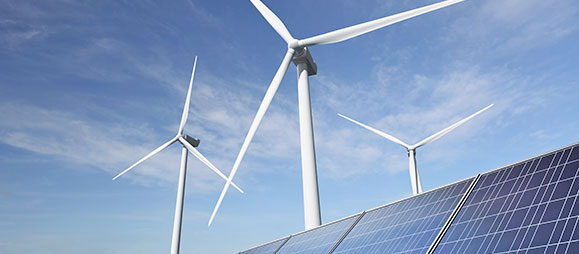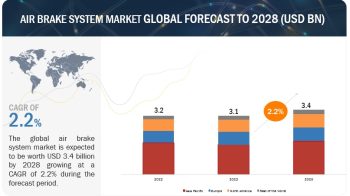
The global Energy as a Service Market is projected to grow from USD 64.7 billion in 2022 to USD 105.6 billion by 2027, at a CAGR of 10.3% according to a new report by MarketsandMarkets™. Increasing distributed energy resources, new revenue generation streams for utilities, availability of federal and state tax benefits for energy-efficiency projects and decreasing cost of renewable power generation and storage solutions are driving the demand for energy as a service globally. Due to the manufacturing advances and various technological improvements, the costs of various renewables and storage systems such as solar PVs, fuel cells, grid-based energy storage, especially batteries, and combined heat and power declined significantly in the recent times. The decreasing costs of solar PV are encouraging users to install these resources for generating electricity. Also, governments across the globe are revising energy policies and providing incentives that are encouraging and facilitating a shift from traditional power generation techniques to power generation from clean and renewable forms of energy, including wind and solar. This is evident from the huge investments in the renewable sector in the past decade.
The utilities are therefore offering sophisticated solutions, which include technological as well as financing support to reduce energy consumption and improve energy efficiency, thereby creating new revenue generating streams for themselves. They have started providing solutions that combine energy procurement, efficiency, and load balancing. The utilities are also providing long-term Energy Service Performance Contract (ESPC), Utility Energy Saving Contracts (USPC), and Power Purchase Agreement (PPA) that are either pay-for-service or similar to a performance contract in which costs are covered by energy savings. These contracts help the utilities secure revenue for a long time from the end-users.
Download PDF Brochure: https://www.marketsandmarkets.com/pdfdownloadNew.asp?id=23172723
The Energy as a Service Market includes prominent Tier I and Tier II manufacturers like ENGIE, Enel X, Schneider Electricity, Ameresco and Siemens. These companies have their spread across Europe, North America, Asia Pacific, and other regions. Various services are offered by these players for instance, energy efficiency solutions, energy infrastructure, energy intelligence software, operation and maintenance services and many more. These services is used to increase the efficiency of the end-user industry and the growth of these industries is expected to also lead to the growth of the Energy as a Service Market.
The energy supply services segment is expected to dominate the Energy as a Service Market, by type, during the forecast period.
Energy supply services refer to the idea where a building’s energy requirements are taken care of by an outside company, typically utilities or service providers. The current energy markets are more complex than they have been in the past. Utilities traditionally would provide electricity to a building at a rate based on the time of consumption, and there was not much a building owner could do to change their overhead energy costs. Also, energy supply services protect end-users from grid blackouts and weather extremes that would threaten the operations of a traditional grid connected commercial and industrial entities. In energy as a service operation, energy supply services are increasingly delivered through Energy Services Agreements (ESAs) that are performance-based contracts through which a service provider agrees to finance, develop, and deploy renewable energy projects for clients without any upfront capital expenditures. In addition to this, consumers do not have any responsibility to maintain and upgrade the equipment.
The commercial segment is expected to be the largest and fastest growing market, of end-user, during the forecast period.
The commercial segment includes establishments such as healthcare, educational institutions, airports, data centers, leisure centers, warehouses, hotels, and others. Global energy consumption in buildings has decoupled from the growth in floor space and economic outputs. This shows that consumers and businesses can make use of energy services more efficiently and at a greater value. For instance, Edison was awarded an energy performance contract with the Putnam Valley Central School District to significantly improve the energy efficiency of the District’s buildings and infrastructure and slow the pace of escalating energy costs.
Request Sample Pages: https://www.marketsandmarkets.com/requestsampleNew.asp?id=23172723
The North America likely to emerge as the largest Energy as a Service Market
Energy as a service represents a shift from customer-owned equipment toward a model where the service provider maintains ownership, and the customer pays for the services provided by the equipment. Key country-wise markets in the regions have also been studied in this section. North America is expected to lead the Energy as a Service Market with major utilities in the region looking to diversify their revenue streams with major transformations driven by decarbonization, decentralization, and digitization. In addition to this, as the regions demand cleaner and sustainable power increases, energy efficiency in North America is moving to integrate Distributed Energy Resources (DERs) to help ensure grid reliability, meet state and provincial efficiency requirements, and help commercial and industrial users to meet their emissions reduction targets and goals.
The Energy as a Service Market is dominated by major players that have a wide regional presence. Some of the key players in the Energy as a Service Market are ENGIE (France), Enel X (Italy), Schneider Electric (France), Ameresco (US), Siemens (France), General Electric (US), Veolia (France), Honeywell (US), Centrica (Netherlands), Alpiq (Switzerland), WGL Energy (US), Orsted (Denmark), Bernhard Energy Solutions (US).


